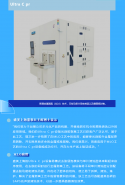We did some calculation based on the chart for revenue per 12 inch wafer of 14 nm (you know the ones provided by research on revenue/cost for different wafer sizes) and it averaged something like 30k wpm for first half of this year. Although, I suspect that they were probably producing 14/12 and N+1 by then. My guess is they are getting pretty close to operating 35k wpm at SN1 by now.Not necessarily. SMIC might have gotten more customers for the FinFET processes i.e. the factory is more loaded to capacity or they might have improved yield. Without increasing the maximum amount of wafers they can process.
Sometimes, chip designers need a bigger wakeup call. Phytium had no choice because they got put on entity list in 2021. Since then, all their chips had to be fabbed at SMIC. Pretty sure SMIC is also fabbing Hygon and Zhaoxin by this point.It is good that SMIC are getting customers for FinFET. Too many Chinese companies are choosing to fab chips at TSMC and Samsung when they could be using SMIC instead. I think this is seriously myopic on their part and they risk getting hit by sanctions too.
We haven't received any info on its process. we know S60 used 12nm and S80 has noticeably higher transistor count (but not what you would expect for N7P). Based on the absolute secrecy about it, I think there is a good chance they are going with SMIC N+1 process, but who knows.I think I read somewhere that the S80 GPU uses a 7nm process. If that is the case I doubt they are fabbing it at SMIC. The problem with GPUs is that they typically have a large die area and if the process still has too many defects the chip will be severely hit by that. Although GPUs are highly regular so perhaps that can be mitigated.
I keep reading the new Beijing fab will be using SMEE scanners (at least for some production lines), but who knows. The news that Guowang is massively expanding production for 28nm, 90/110nm and 280/350nm is as indicative of SMEE scanner demand as any. That will go into production in 2023.I hope you are right about SMIC FinFET capacity expansion. But I am kind of skeptical.
What about all the new SMIC 28nm fabs then? I doubt they will be using non-existant SMEE immersion lithography machines.
The new Shenzhen fab, beijing capital fab and any SMNC fab expansion don't need NXT 2050i/2100i. These scanners are probably a lot more expensive than your standard 1980i they use for your regular 28nm production. As such, the fact that they are continuing to take 2100i deliveries should be a good sign that they are expanding FinFet production.
On the whole, they are probably buying 20 to 25 ASML Arfi scanners a year. That's way more than they need for the mature process capacity expansion that they are doing (which is probably 50k wpm next year? 20 in Shenzhen, 30 amongst Beijing fabs?)
I must stress again, an additional $1.6 billion capex for prepayment of early delivery of ASML machines represent a lot of scanners.



